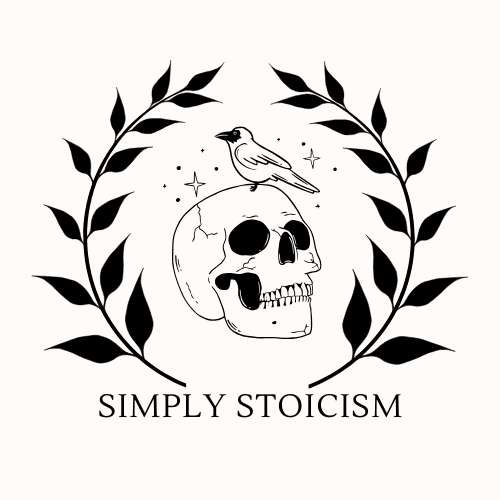How to Cultivate Mindfulness in a Digital World
Discover how ancient Stoic wisdom can transform your relationship with technology. Learn battle-tested mindfulness techniques that create real digital clarity and inner peace.

Jon High
·
Dec 26, 2024
Look, I know what you want to hear. You want me to tell you that downloading another meditation app will solve everything. That if you just silence your notifications and do some breathing exercises, you'll finally find that elusive sense of "digital wellbeing" everyone keeps talking about.
But I say forget what you want to hear. Because let's be honest, that's not what you need to hear.
Here's the truth: Most modern mindfulness advice is just slapping a fresh coat of paint on a house that's rotting from the inside. While we're all searching for ways to find happiness in this digital age, we're trying to solve a fundamentally philosophical problem with surface-level technical solutions.
And how's that working out for us?
Our phones still own us. Our attention spans are still fragmented. And despite all our apps and morning routines, we're more disconnected than ever from what Marcus Aurelius and his timeless wisdom for a chaotic world knew was our greatest asset: our ability to think clearly and choose wisely.
But there's a way out. And it doesn't require you to become a digital hermit or download a single app.
The Real Problem Isn't Technology
The ancient Stoics understood something that most mindfulness gurus miss: your problems aren't special. The challenge of maintaining focus isn't unique to our digital age—it's a fundamental human struggle with managing our response to external chaos.
As you work on controlling what you can and letting go of what you can't, remember that Marcus Aurelius didn't have Instagram or Slack notifications to deal with, but he faced the same fundamental challenge we do: maintaining mental clarity and autonomy in a world designed to fragment our attention.
"Today I escaped from anxiety," he wrote. "Or no, I discarded it, because it was within me, in my own perceptions—not outside." The brutal truth about self-awareness is that most modern mindfulness advice goes wrong by treating digital distraction as something happening to us, rather than something we're actively participating in.
The Hidden Cost of Digital Autopilot
Before we dive into solutions, we need to understand what we're really losing when we live in a state of constant digital distraction. Just as the ancient Stoic virtues guide us toward living well in a chaotic world, understanding these costs can help us make better choices.
We're losing:
Deep Thinking Capacity: The ability to stay with complex thoughts long enough to generate genuine insights
Emotional Intelligence: The space between stimulus and response where we can choose our reactions
Creative Potential: The quiet moments where breakthrough ideas emerge
Genuine Connection: The ability to be fully present with others
Self-Knowledge: The awareness that comes from regular self-reflection
These aren't just philosophical concerns. For modern CEOs turning to Stoicism to stay resilient, these are practical disadvantages in a world that increasingly rewards depth, creativity, and emotional intelligence.
The Stoic Path to Digital Clarity
As you begin your journey on the Stoic path to acceptance, here's what the ancient wisdom teaches us about finding genuine mindfulness in the digital age:
1. Accept the Reality of the Digital World
Your devices aren't going anywhere. Just as the story of Seneca teaches us about embracing life's inevitable challenges, fighting against this reality only creates more internal turbulence. Instead, acknowledge that you live in a connected world—then focus on what's actually in your control.
This isn't passive resignation. It's strategic acceptance. As you develop your amor fati - love of fate, you'll find that accepting reality is the first step to changing your relationship with it.
2. Question Your Judgments
Every time you feel that anxious pull to check your phone, pause and ask:
What judgment am I making about this notification?
What story am I telling myself about why I need to respond immediately?
What am I afraid will happen if I don't check?
What values am I prioritizing in this moment?
3. Practice Intentional Attention
The Stoics emphasized that where we place our attention is a choice. When applying Stoicism in modern day life, remember that mindless scrolling is just another form of surrendering your autonomy to external forces.
The Technology Audit: A Stoic Approach
Before implementing new practices, take a page from the nine core Stoic beliefs and conduct a thorough self-examination. Ask yourself:
What digital tools truly serve my deeper purpose?
Which ones am I using out of habit or social pressure?
How do different apps and platforms affect my mental state?
What would a wise person's relationship with technology look like?
Am I using technology, or is it using me?
A Different Kind of Digital Practice
Instead of trying to escape the digital world, we need to learn to navigate it with wisdom. Just as we can learn how a Stoic would handle a breakup, we can learn to handle our relationship with technology mindfully.
1. Create Digital Boundaries
Establish clear boundaries between "connected" and "disconnected" time. As you explore the 40 Stoic exercises for daily life, incorporate these specific practices:
Define specific "deep work" hours where notifications are completely off
Create physical spaces in your home that are device-free
Use different devices for different purposes
2. Develop Intentional Engagement
Before picking up your device, pause and state your intention. Like the five morning rituals inspired by Stoic practices, make this a consistent part of your daily routine:
Write down your intended use before unlocking your phone
Set timers for specific tasks
Keep a log of your actual usage versus intended usage
3. Practice the "Stoic Scroll"
When finding focus in a frenzied world, continually ask yourself:
"Is this adding value to my life?"
"Is this helping me become who I want to be?"
"Would I recommend this use of time to someone I respect?"
"Is this aligned with my philosophical principles?"
Advanced Stoic Digital Practices
For those ready to go deeper, here are some more advanced practices that combine the modern definition of Stoicism with digital reality:
1. Digital Negative Visualization
Practice memento mori with your devices. Regularly imagine losing access to them. What would you miss? What would improve? This practice helps clarify which digital tools truly serve you.
2. Technology Fasting
Just as decision-making the Stoic way requires clarity, periodically abstaining from non-essential technology use can help reset your relationship with digital tools.
3. Purpose Alignment
Regularly audit your digital activities against your life's purpose and philosophical principles. Delete apps and unfollow accounts that don't align with your values.
The Path Forward
The goal isn't to achieve some perfect state of digital zen. As the Stoic product manager learns to balance efficiency with wisdom, we too must find our own sustainable approach to technology.
Start small. The next time you feel that familiar urge to check your phone, pause. Take a breath. Remember that you have the power to choose your response. That's not just mindfulness—that's freedom.
And isn't that what we're really after?
The Daily Practice
To make this practical, here's a simple daily framework that aligns with mastering emotions through Stoic wisdom:
Morning: Set your intention for technology use
Throughout the day: Practice the Stoic Scroll
Evening: Reflect on your digital choices
Weekly: Conduct a technology audit
Monthly: Experiment with digital fasting
Remember: The devices that surround us are neither good nor bad in themselves. What matters is how we use them. As you explore Stoic perspectives on change, remember that every moment is an opportunity to reset your relationship with technology.
Your digital world can either be an obstacle to mindfulness or a training ground for it. The choice, as always, is yours.
The real question isn't whether you'll engage with technology—it's whether you'll do so with the wisdom of a philosopher or the reactivity of a slave. Choose wisdom. Choose freedom. Choose mindful mastery over mindless consumption.
After all, as Epictetus reminded us in his guide to emotional intelligence, "Freedom is not achieved by satisfying desire, but by eliminating it."



